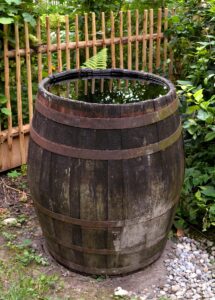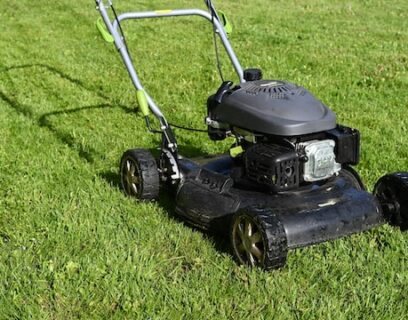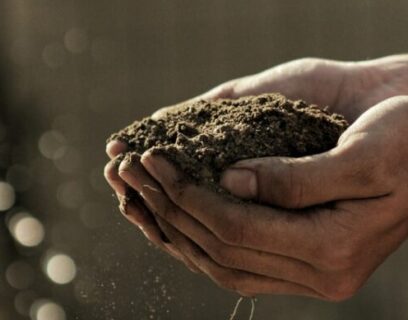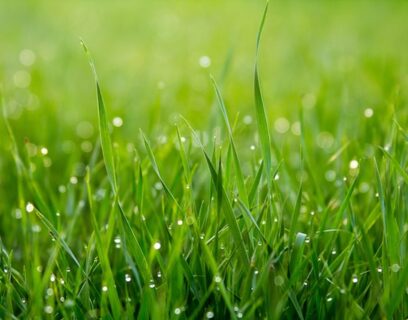Log in or create new account to save this product to your wishlist.
Harvesting and recycling rainwater to feed your lawn
If you want a gorgeous, lush lawn, you need to water your grass. But prolonged periods of drought are becoming more frequent in the UK, and they often lead to hosepipe bans, forcing us to sacrifice our beautiful lawns. But there is a way to get a lush, well-watered lawn all year round: Rainwater recycling.
Latest articles
7 MIN 22 Jul How to keep your lawn in shape this summer 9 MIN 15 Jul Watering Your Garden: 10 Top Tips! 11 MIN 15 Jul Is Your Grass Type Right for your Garden? 11 MIN 10 Sep Create Your Low-Maintenance Garden – Tips and Ideas 11 MIN 08 Sep The Ultimate Guide to Choosing the Perfect Hedges for Your Garden 12 MIN 30 Aug The Top 20 Evergreen Climbers to Transform Your GardenAre you worried about the environmental impacts of watering your lawn? If you use a water meter, perhaps you’re concerned about the costs of pouring gallons of water onto your soil?
If you want a gorgeous, lush lawn, you need to water your grass. But prolonged periods of drought are becoming more frequent in the UK, and they often lead to hosepipe bans, forcing us to sacrifice our beautiful lawns for the good of the community.
But there is a way to get a lush, well-watered lawn all year round:
Rainwater recycling.
This blog is all about harvesting rainwater, exploring the pros and cons of this environmentally friendly way of keeping your lawn looking lush and green.
Without the existential guilt.
How to recycle rainwater
There are two main ways to harvest and recycle rainwater.
A water butt is the most inexpensive solution; essentially, a simple network of guttering that channels rainwater into a ground-level storage tank.
Water butts typically hold up to two hundred litres of rainwater. You just pour the collected water through a spout at the bottom of the tank and use this to water your garden.
A water butt will go some way to keeping your lawn lush, but it’s worth considering a Rainwater Harvesting System (RHS) for maximum storage capacity.
What is a Rainwater Harvesting System?
Rainwater Harvesting Systems can filter and store as much as 6,500 litres of rainwater. With capacities like this, you’ll also have enough excess water to flush your loo and wash your clothes.
In fact, an RHS helps you reduce your household water consumption by up to 40% each year.
How much are we talking?
An RHS will cost you considerably more than a water butt. Water butt systems start from around £25 for entry-level systems, which hold about 100 litres of water, and up to around £500 for systems with higher capacities.
And while 100 litres doesn’t sound like a lot, every drop of water saved helps the environment.
Tim Robertson of Save Water Save Money claims that if each British household were to collect just one water butt’s worth of water each year (around 160 litres), the UK would collectively save 4 billion litres of freshwater every year.
How does a Rainwater Harvesting System work?
An RHS works in precisely the same way as a water butt, collecting rainwater from the gutters on your roof – just on a grander scale. Most RHS systems include high-powered pumps, filters, and a storage container that’s usually buried underground in the garden.
An average domestic RHS usually costs around £2500, so the initial cost is higher. Still, the savings over time add up (especially if you use a water meter to calculate your bills).
What are the benefits of rainwater?
When we switch on the taps in our homes, we receive high-quality water that’s safe for human consumption; made safe with chemical treatments executed at your local treatment plant. This makes our tap water safe to drink, but the chemical makeup of tap water isn’t always perfect for our plants.
Rainwater is naturally softer than tap water and is usually a more suitable pH level for your soil.
How much does it cost to water your lawn?
Sprinkler systems offer a popular method for easy, regular lawn irrigation. But have you ever wondered how much water you use when you set off your sprinkler?
You’d better sit down!
According to Save Water Save Money, using a hose pipe or a sprinkler for an hour can use as much as 1000 litres of water.
And if you use a water meter, that’s going to cost a lot of money.
According to United Utilities:
- 1 litre of water costs 1p
- while a cubic metre of water costs £3.08.
1000 litres of water is one cubic metre, so an hour of sprinkling will set you back £3.08. And, while this might not necessarily sound like a massive amount in isolation, if you run your sprinkler twice a week, over a year, it will cost you £320.32.
And to put it into a more relatable context: 1000 litres of water is equivalent to 28 showers or 13 baths.
So, watering your garden uses a LOT of water. And, from a purely financial perspective, collecting rainwater to water your garden is a no-brainer.
Can I use a hosepipe with a water butt?
Water butts are great for filling watering cans, but they don’t produce enough pressure to run a hose.
But there is a solution: an electric water butt pump – which you can buy for around £50 – provides enough pressure to water your lawn with a hose.
This model can deliver 5200 litres in an hour and comes with standard hose pipe connectors.
Find out more about Rainwater Harvesting Systems
If we’ve whetted your appetite (excuse the dad pun!), there’s plenty of resources online that help you explore the possibilities of installing your own Rainwater Harvesting System. For more info, look here.
Happy watering!
Leave a comment
Your answer will be displayed on the site and the interested party will be notified by email.
Leave a comment
Have a question or want to share your experience? Leave us a comment.
Read more
The best tips and tricks for a lush green lawn
 Scarifying Kit
All products after scarifying | Quickly restores the lawn after scarifying | Outsmart weeds quickly with the use of this kit
From: € 39.99
Scarifying Kit
All products after scarifying | Quickly restores the lawn after scarifying | Outsmart weeds quickly with the use of this kit
From: € 39.99
 Spring Lawn Care Kit
MOOWY’s choice for the spring | Quick recovery of your lawn after winter | A strong lawn prevents weeds
From: € 25.99
Spring Lawn Care Kit
MOOWY’s choice for the spring | Quick recovery of your lawn after winter | A strong lawn prevents weeds
From: € 25.99
 Long Lasting Lawn Fertiliser
Effective for 90 days | See results in 14 days! | Suitable for all types of grass and soil
From: € 13.99
Long Lasting Lawn Fertiliser
Effective for 90 days | See results in 14 days! | Suitable for all types of grass and soil
From: € 13.99
Do you want a lawn calendar?
🌱 All important maintenance moments for your lawn during the year. Leave your email and we will send you the lawn calendar for free.
Enter your email
Receive the lawn calendar in the mail
Enjoy a green lawn all year round!














Comments (0)
There are no comments yet. Well then, what are you waiting for to
Be the first to write your comment!inaugurate this pretty page?
Do you have some comments?